Flies
{{start}}
{{end}}

{{+1}}Rivers – fly positioning on droppers{{-1}}
{{start}}
Proceeding through an orderly process as described in this post is a good way of making your fly selection for any trout river.{{end}}
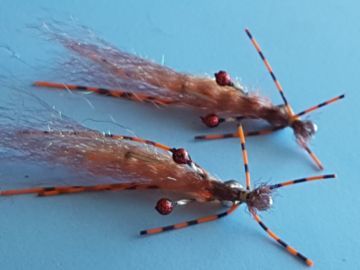
{{+1}}Tidal flats shrimp – orange and brown{{-1}}
{{start}}
This orange and brown size #2 hook version of my tidal flats shrimp is my first choice of fly when targeting feeding trigger fish. It stands out in the storm of mud and other debris that trigger fish stir up as they forage around for food.{{end}}
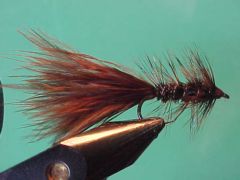
{{+1}}Fly suggestions – Snowy Mountains (Tantangara, Eucumbene & Jindabyne){{-1}}
{{start}}
This is a list of flies that I know all work well for Lakes Tantangara, Eucumbene and Jindabyne.{{end}}
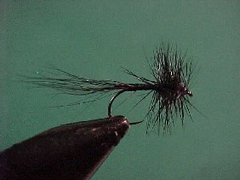
{{+1}}Black spinner{{-1}}
{{start}}
The term spinner is generally used only in the context of referring to a small number of Mayflies including Black, Red and Orange Spinners when they are both on the water and in the air. The following Spinner is a generic representation for members of the “Leptophlebiidae” family of Mayflies and the various Highland Duns & Spinners, which are members of the “Oniscigastridae” family. Hatches generally occurs between the months of October and March.{{end}}
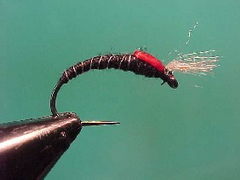
{{+1}}Chatto’s black alpine buzzer{{-1}}
{{start}}
This is the second in the series of three versions of the same fly. This first in the series is the bloodworm version. which is the original colour of the pupa as it emerges from the slime on the lake bottom. Over a short period of time the bloodworm changes to a dark colour with varying amounts of red present as the transformation occurs. As it reaches the surface the dark colour mellows and the pupa assumes a grey or olive colour similar to its terrestrial colour.{{end}}
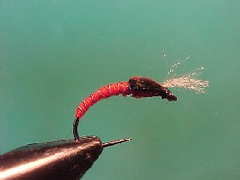
{{+1}}Chatto’s bloodworm alpine buzzer{{-1}}
{{start}}
This is the first in the series of three versions of the same fly and is representative of the original bloodworm colour of the pupa as it emerges from the slime on the lake bottom. The second fly in the series is black with flashes of red representing the pupa as changes to a dark colour with varying amounts of red present as the transformation occurs. The third fly in the series is representative of the colour of the pupa as it reaches the surface the dark colour mellows and the pupa assumes a grey or olive colour similar to its terrestrial colour.{{end}}
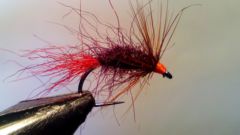
{{+1}}Claret carrot{{-1}}
{{start}}
Based on the design of the carrot fly this version is particularly appealing to fish feeding on emerging Mayfly in Tasmania's central and western lake.{{end}}
{{+1}}Lakes – loch style … fast sink lines for ‘deep sulking or feeding trout{{-1}}
{{start}}
As long as it’s not too windy the ‘fast sink lines for deep sulking or feeding trout’ system described here provides a way that you can present moving flies that may induce a strike to fish that may or may not be actively feeding but are holding in deeper water.{{end}}
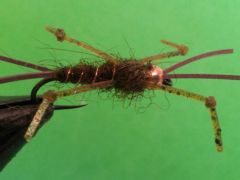
{{+1}}TBH stonefly{{-1}}
{{start}}
Stoneflies thrive in the rubble of cold well oxygenated rivers & streams. They are an available food source throughout the season and fish may feed on them to the exclusion of all other food sources particularly during hatches. The nymphs crawl along the bottom and exit the water at the stream or river edge where they hatch into stoneflies. To imitate this action the fly must be well weighted.{{end}}
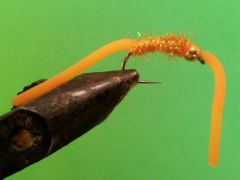
{{+1}}TBH squirmy worm{{-1}}
{{start}}
The material that this TBH Squirmy worm fly incorporates hit the market in 2014 with gusto. There are now plenty of versions of squirmy worm flies being tied and they have turned out to be a must have fly for use in both rivers and lakes. My version incorporates a process of tying the delicate squirmy wormie material in with a thread and dubbing rope than just thread making the fly much more durable.{{end}}













